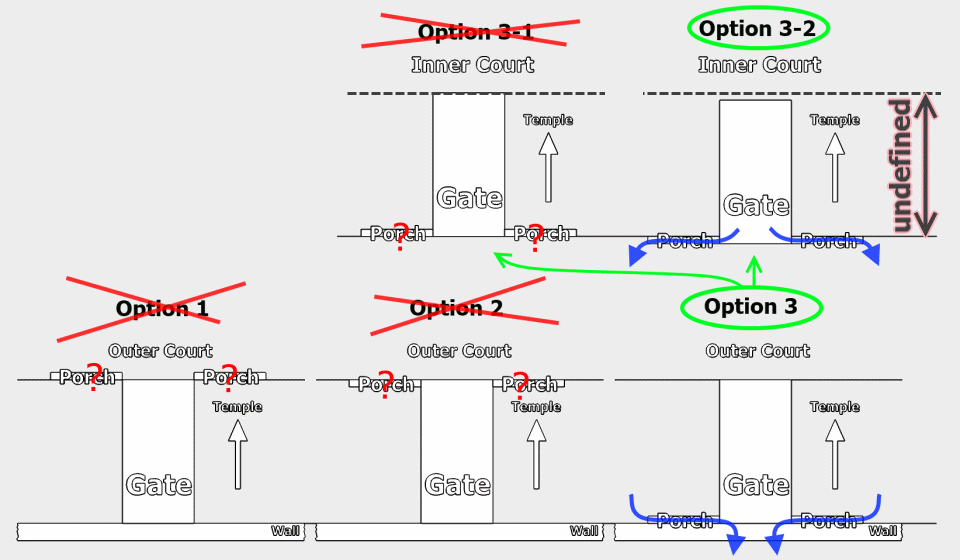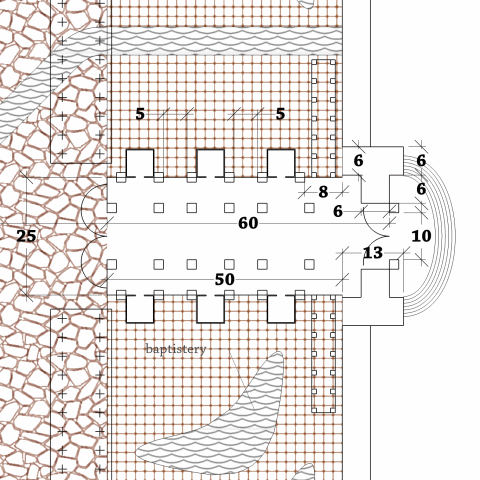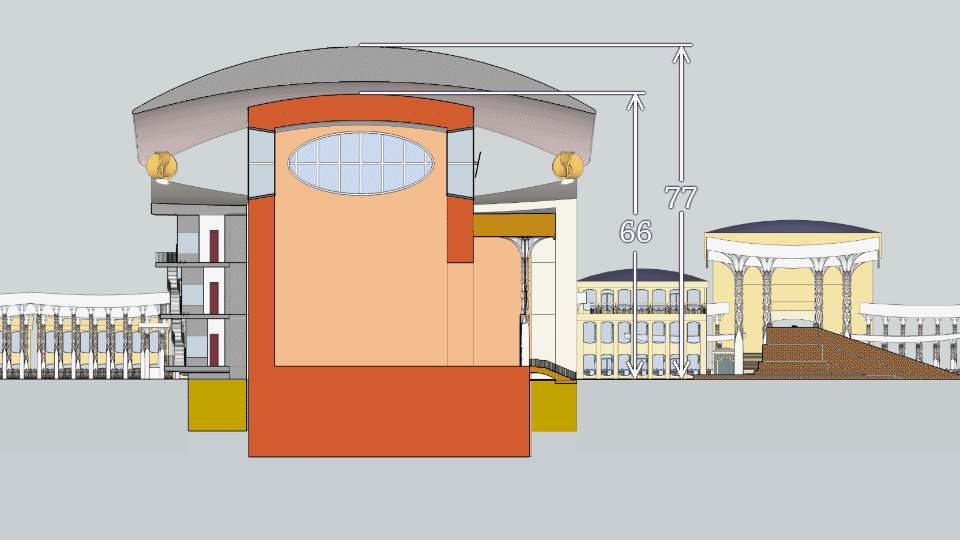The logic of creating a plan of Ezekiel's Temple
When creating the plan of the Third Temple, we will follow the prophecy of Ezekiel, when choosing possible options, we will proceed from their functionality. We assume that the plan of the Third Temple is rational and all architectural elements of this plan should have an understandable purpose.
First of all, we draw attention to the fact that the size of 60 cubits (40:14) of height for pillars having a thickness of 2 cubits (40:9) seems inappropriate. Turning to the Hebrew original, we see that about the size of 60 cubits it is not written that it is the height of the pillars. Verbatim: "There are 60 cubits in the pillars at the court and at the gates round and round." That is, this verse may say that the size of 60 cubits should be measured in a horizontal plane from the first pair of pillars at the entrance to the last pair of pillars near the court.
Along the way, we note that the pillars referred to here are not columns. The Hebrew word denotes a supporting structure, a support, it is a pillar, not a column: to designate round columns, another word exists. Therefore, at first we depict the profile of this pillar as a rectangular, square with a side of 2 cubits.
We draw attention to the fact that when the prophecy refers to the size of the gate, we mean the internal size of the hall where the gate is located. Also, we notice that at the gate (that is, at the hall) there are porches (at least two) having a length of 25 cubits and a width of 5 cubits. It is written that these porches are located on the side of the Temple (40:9). It would seem that we should draw two porches near the facade of the gate adjacent to the court. But immediately the question arises about the functionality of such an arrangement of the porches.

Why is it necessary to divide the flow of people into two or three parts in front of the court? To approach these porches, a stream of people must go through the hall, where the guard rooms are located on the sides. It is very inconvenient if the flow of people passes by the guards in both directions, both entering the Temple and leaving it. Therefore, we can accept the interpretation of the verse, which says about the location of the porches on the side of the Temple, that the porches is not located on the outside of the outer wall, but on the inner side of the wall of the temple complex.
Further, we draw our attention to the fact that the structure of the gate hall located in the inner court is similar to the structure of the gate hall located in the outer court near the outer wall (40:33). We carefully look at the list of matching elements: guardrooms, side pillars, porches.
We know the length of the hall at the gate located in the outer court, it is the same as the hall at the gate located in the inner court: 50 cubits. But according to the functional version, when the porches, which are located near the external wall and serve to separate the flows of people into the incoming stream and the outgoing flows, the width of these porches of 5 cubits fits into the length of the hall at the gate of 50 cubits.
Therefore, in order for the porches located near the inner court to be functional, they must be moved to the territory of the outer court, and the hall where the gates are located will be moved along with them.
This makes our model of the temple complex functional, the functions of all the elements get a rational explanation, but we lose the opportunity to compare the length of the gap between the border of the courtyard and the border of 100x100 cubits in front of the facade of the Sanctuary House. And this distance must be known in order to determine the length of buildings for the Kohanim located in the inner court.
( Read more... )







